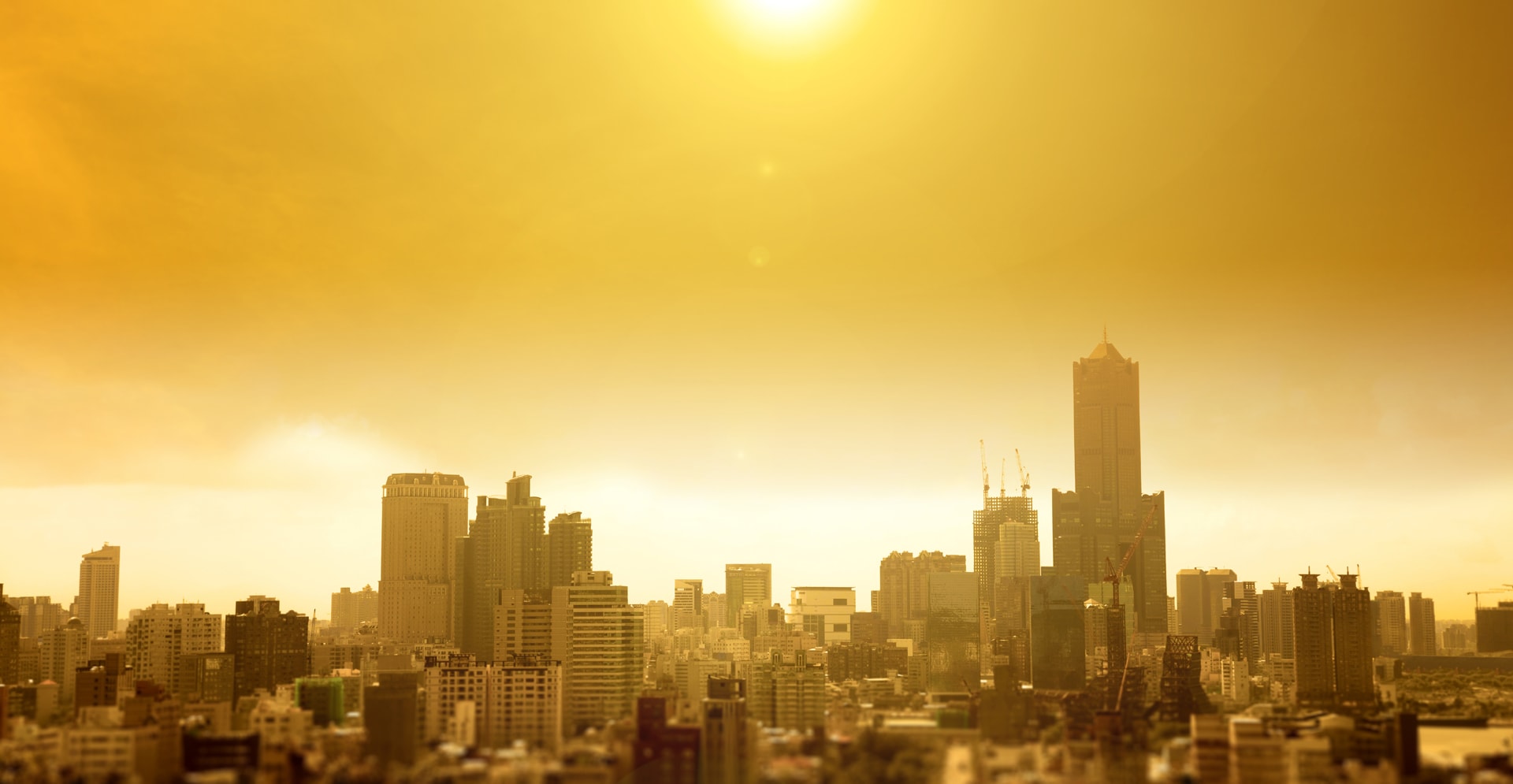Will we act? Will we do what is necessary? Will we seize the enormous opportunity before us? Or will we condemn future generations to suffer?
US President Joseph R. Biden at COP 26
With these four questions, President Biden opened his initial remarks to attendees at this year’s COP 26 meeting of world leaders. 2021 may go down in history as the year that we finally stopped arguing about whether climate change is real and started taking decisive action to address the crisis which is clearly upon us. I hope that we will look back on this year and see that 2021 was when we collectively began to understand what real climate action looks like and where it needs to happen to make the biggest difference.
We simply aren’t doing enough to avoid catastrophic impacts from global warming, but if we act now with a sense of determination and urgency, we can still turn things around. We can only do this if we focus our efforts where they will maximize our impact, by protecting the most people from the impacts of climate change and helping humanity curb greenhouse gas emissions in the most effective ways.
Decisive climate action, focused on the built environment in cities, can help lead us out of this crisis and if we’re smart about it, we can even turn this challenge into an opportunity to improve quality of life for everyone.
Why must we act now?
We’ve seen this year’s IPCC report on the physical basis for climate change as well as the more recent UNEP Emissions Gap Report. Both lay out the very real likelihood that we’re on a path to see global warming reach nearly 3 degrees Celsius by the end of the century. That’s two times what we had hoped would be our limit back in 2015, when the nations of the world signed up to the Paris Climate Change Agreement.
But we’re at a stage where you don’t even need to read scientific reports to tell us what we can see with our own eyes. Completely unexpected and devastating flooding across parts of Europe this summer, a heatwave in Canada in which shellfish literally cooked on the beaches, bushfires across Australia, wildfires in Oregon and California and the city of Zhengzhou, China inundated after receiving a full year’s worth of rainfall in just three days.
No further proof is needed. It’s time for climate action.
What is climate action?
I’m fortunate to lead a company made up of thousands of professionals who are working to address the climate challenge. At Arcadis, we are more than 28,000 architects, data analysts, designers, engineers, project planners, water management and sustainability experts, delivering solutions for natural and built assets, driven by our passion for improving quality of life. So, I spend a lot of time thinking about what more we can do to tackle climate change.
I believe the answer is climate action, but I want to be clear about what we mean with this term. ‘Climate action’ is much more than merely taking incremental steps to dial back greenhouse gas emissions. We most certainly need to curb emissions in earnest, but with the climate disaster already upon us, we must recognize that emissions reductions alone will not save us. We have to act swiftly to protect people, the environment, as well as businesses from the impacts of climate change, while at the same time driving down emissions. That is true climate action. And we have to take these steps in the places on Earth where we can create the biggest positive impact, namely, in cities.
Why should we focus on climate action in cities?
There are two very simple reasons why we need to focus climate action on cities, and they are both a byproduct of another megatrend, urbanization. First, since so many people live in urban areas (and by 2050 nearly 70% of people will live in cities), when we think about the first side of the climate action coin, adaptation, making our cities more resilient against climate change will protect more people and businesses from disaster. Additionally, a large percentage of our global population resides in coastal cities, the vast majority of which are not adequately protected against the sea level rises we will experience in the coming decades (more on this below).
Second, cities are the places on Earth where we’re emitting the most greenhouse gasses. And in terms of the second side of the climate action coin, mitigation, urban areas are exactly where we need to drive down emissions in order to get a grip on global warming. In other words, cities are the places on Earth where we can maximize our impact in combatting climate change.
Rethinking our cities
Taking definitive climate action in cities will require us to radically rethink urban spaces. The good news is there are lessons we can learn from the COVID-19 pandemic. The coronavirus outbreak showed us that we need more green and blue spaces in cities. People need room to get out of their homes and move around but at safe distances from other people, in the event of a pandemic. But those same green and blue enhancements, like new parks and more green space around urban rivers or vegetation on building rooftops and facades, can also provide protection against the impacts of climate change, while simultaneously helping to reduce emissions and improving quality of life in our cities.
There are myriad benefits to be derived from cities with ample, lush vegetation and with abundant space for waterways. These cities would be far less prone to urban heat island effect, critically important given the extreme temperatures we are already seeing in cities around the world. This reduction in temperatures would have the knock-on benefit of reducing emissions from cooling indoor climates. These cities would have better air quality as the vegetation would help clean pollutants from the air. This type of city would be more flood resilient, as the green spaces would greatly increase the water absorption capacity of the city. And this would lend itself to smart ways of storing water when it rains (discover our Sponge City concept), so it can be used during times of drought.
The importance of urban waterfronts
Even if we can limit global warming to 2 degrees Celsius or less (something we are currently not on track to do), it’s estimated that by 2050, 570 cities and 800 million people will be facing the threat of rising sea levels and storm surges. This means that as we rethink our cities to take climate action, we need to pay particular attention to urban waterfronts.
When we make urban waterfronts more resilient, we protect not only the people and property at the sea, we also protect people and property farther inland. To better integrate the urban waterfronts into cities and increase their economic benefits, we should develop multi-functional structures. A good example of this can be found in the town of Katwijk, in the Netherlands, where we designed and helped build a flood protection structure, with a parking garage integrated into a dune and a dike. This structure not only provides protection from coastal flooding, the garage generates revenue. Obviously, this is small-scale but replicating this approach around the world can create a significant impact in terms of climate adaptation, as well as creating economic opportunities.
Another good example of this approach can be found in New York City, where our resilience experts helped design an integrated and multifunctional coastal resilience plan for Lower Manhattan’s East Side. This is currently under construction and once completed will enhance the resilience of this community and protect infrastructure. The flood protection system will also be seamlessly integrated into a new recreation area for people to enjoy the waterfront.
Nature-based solutions
The most sustainable way to create climate resilience is to use integrated approaches that use the forces of nature, instead of working against them. With nature-based solutions such as the concept of “Building with Nature”, we have used the forces of wind, water, and earth to restore and strengthen the Dutch coastline with very low carbon emissions, while at the same time creating a unique ecosystem that enhances biodiversity.
One of the projects that I am most proud of is our contribution to the restoration of the Ijsselmeer, a lake separated from the sea by a 32km long dike. To better protect the people of the Netherlands from sea level rise, we have worked to increase the height of this Afsluitdijk (climate adaptation), with our design calling for 40% less concrete than traditional methods, which drastically decreases the carbon footprint of the project (climate mitigation). Here we see climate action at its very best, the combination of both adaptation and mitigation methods in the very same project.
In addition to this, we have also worked with the construction and dredging company Boskalis to design and create a new set of islands within the lakes that have been formed by the Afsluitdijk and the Houtribdijk, another dike farther inland. These islands are called the Marker Wadden. They are a place for plants to grow, fish to spawn and birds to nest. In this way we have also helped to restore the ecosystem, which has been damaged as a result of the need to close off this area from the sea to provide flood protection.
This week, I am honored to be one of the people in attendance at COP 26. I’ll be meeting with leaders from businesses, governments, international, civil society, and non-profit organizations, all of whom are committed to helping the world address climate change. At Arcadis, we hope to help lead us out of the crisis. We’ve committed to doubling down on our unique approach to climate action, adaption projects to protect people and the environment, conducted in ways that mitigate carbon emissions where possible. We’ve also recently committed to achieving net zero carbon emissions in our operations by 2035. We strongly believe that if other organizations follow suit, we can turn things around in time.




